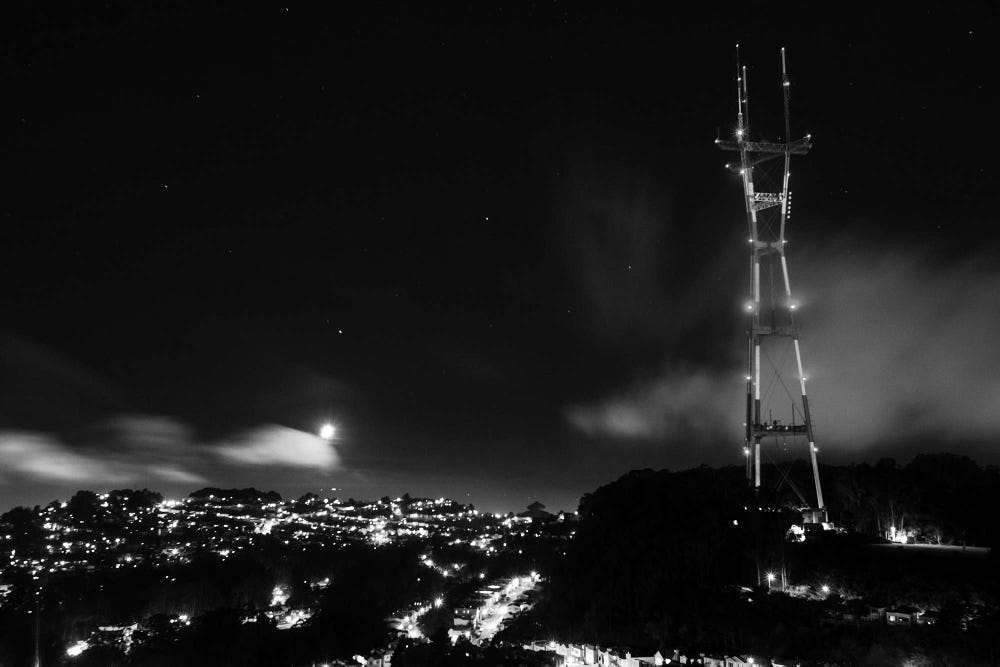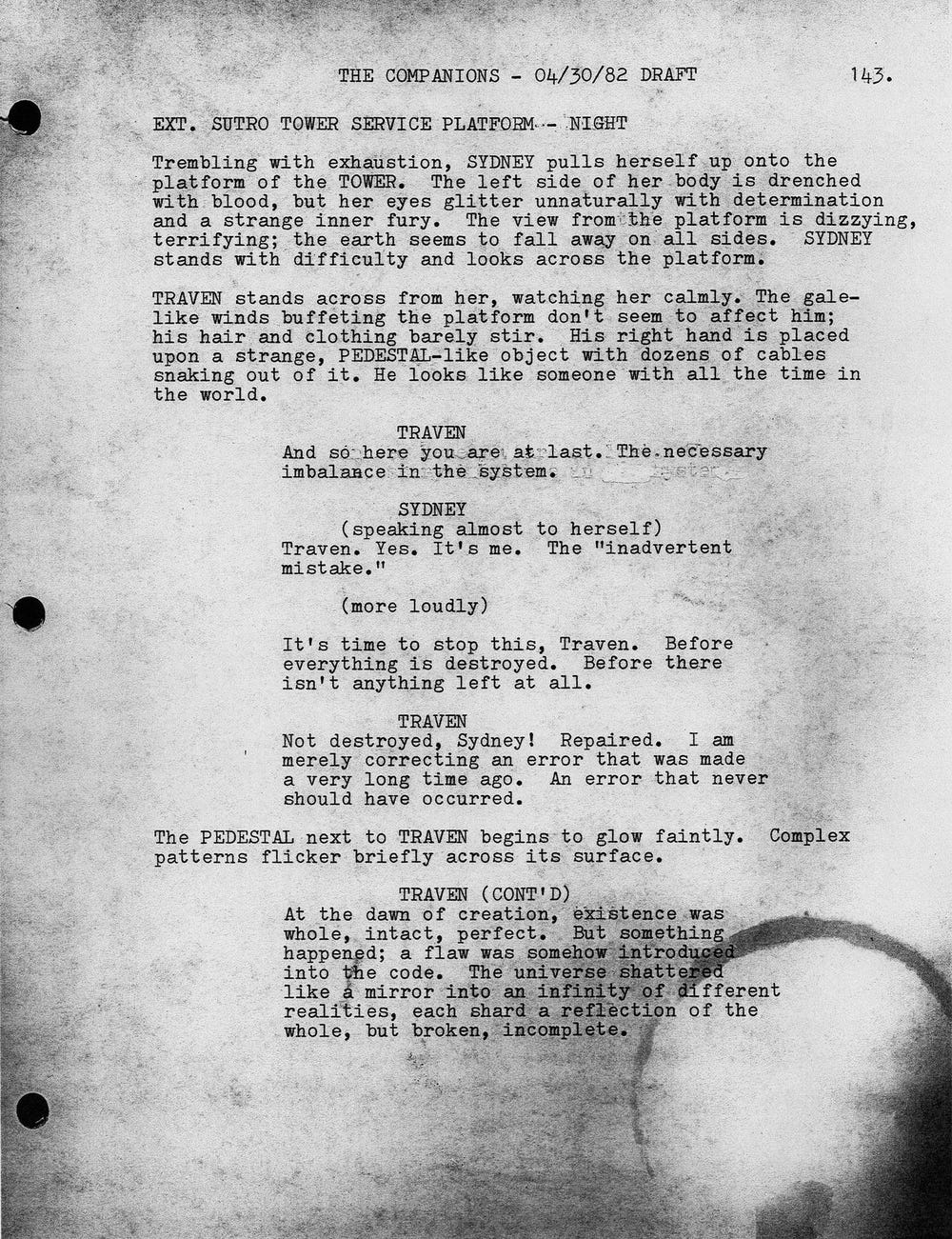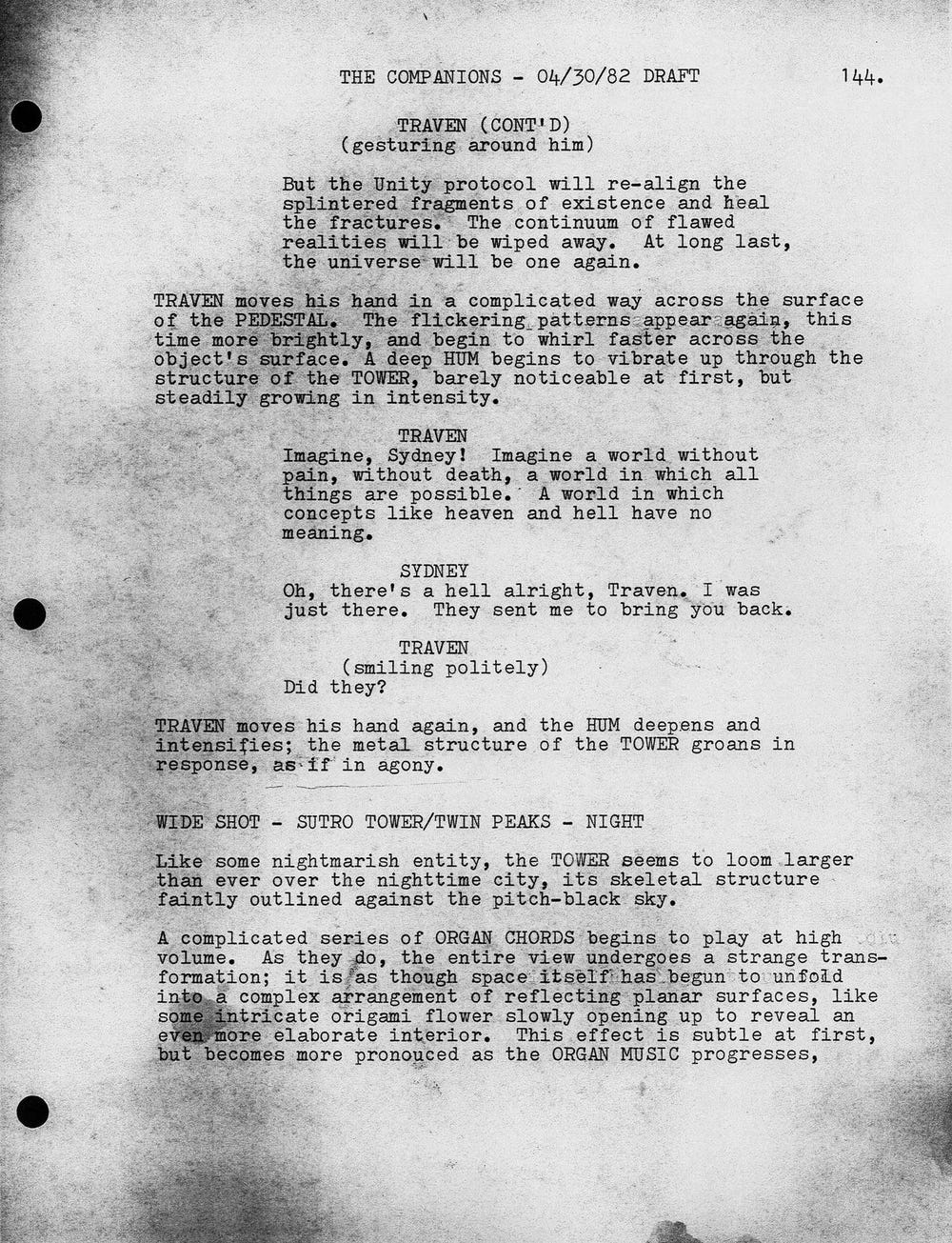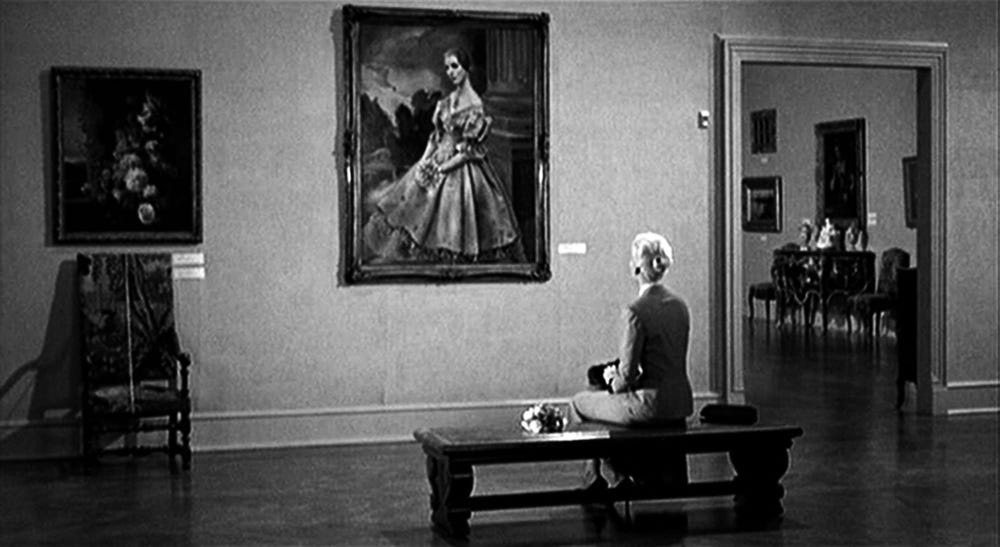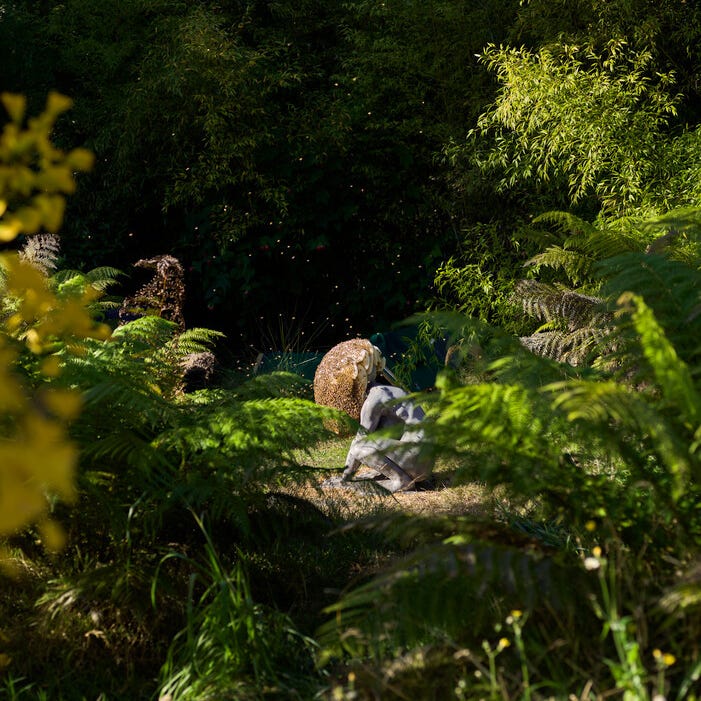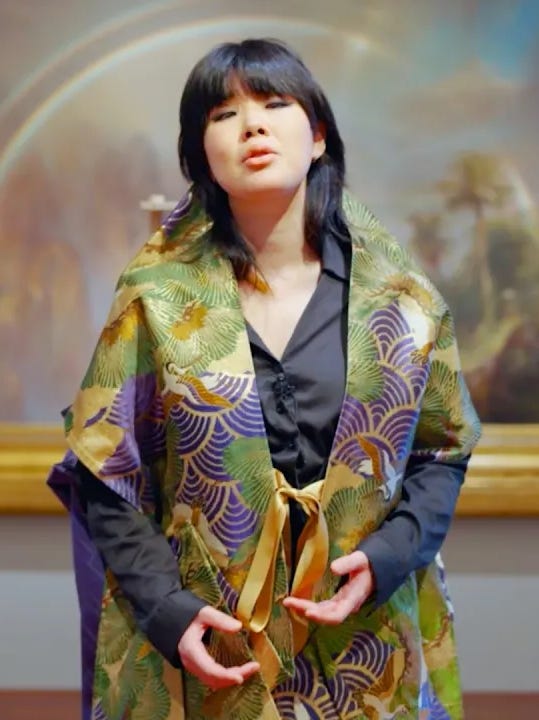The history of American cinema is filled with the stories of countless might-have-beens; screenplays that seemed destined for the screen, but which somehow got lost along the way. Of all the projects that have fallen through the cracks of the motion picture industry, few have a stranger or more troubled history than The Companions. Written in 1982 by an art student and aspiring writer named Carol Montana, the screenplay was fated to become another enduring mystery in the annals of film. Kicked around Hollywood for over two decades, subject to bad deals and endless legal and personal disputes (and at one point, the project was rumored to have been cursed), The Companions eventually disappeared into the same limbo that has swallowed up so many other promising scripts. What follows is a summary of Discenza’s research into Montana’s lost script, which was included in the materials he turned over to Rydstrom and Gold.
The trajectory of any artistic project is always unstable and treacherous, subject to the various failures of its delicate internal mechanisms, of course, but also uniquely sensitive to external conditions as well. For every work that achieves escape velocity from its creator’s mind to find its realization in the world, there are innumerable others whose flight is stalled or interrupted […] the vast majority of such failed endeavors will go unmarked and unrecorded, but on rare occasions the crash itself may arouse the passing interest of onlookers.—Margaret Reeves, "A Writer’s Life"
The Story
The Companions centers on Sydney Reston, a seemingly ordinary young woman working as a data entry specialist for a vast multinational corporation called Global Sequence. Sydney is also trying to develop a career as a fashion photographer in her spare time—Montana’s screenplay depicts her living something of a double life, moving between the sterile corridors of the Global Sequence headquarters and San Francisco’s then-still burgeoning culture of underground punk clubs, performance art, and the city’s lively queer scene. While on a photo shoot at the Legion of Honor, Sydney catches sight of a woman who appears to be her double (one of The Companions’ many overt nods to Alfred Hitchcock’s Vertigo). Her attempt to unravel this mystery leads to a series of increasingly unsettling encounters. Global Sequence seems be implicated in these sinister events; how and why is not clear, though it may have something to do with a “protocol” the company is developing called Unity. Gradually, Sydney is drawn deeper into a complex web of intrigue that becomes ever more ominous and strange, even as its outlines fail to ever come entirely into focus. (At various points, Montana’s screenplay inexplicably cuts away from Sydney’s story to excerpts of a proto-TED talk-style interview with Global Sequence’s CEO Traven, a charismatic, Werner Erhard-like figure who utters cryptic pronouncements extolling humanity’s imminent technologic ascension. These odd insertions, which one would expect would distract from the central narrative, somehow only intensify its atmosphere of claustrophobic unease.)
As it progresses, Montana’s plot grows more disorienting. Several disturbing encounters lead Sydney to suspect that people are being duplicated or multiplied in some fashion. This doubling apparently begins to affect the city’s architecture as well; space itself appears to be subtly shifting—buildings are being erased or replaced, though no one seems to notice the changes. Could it be that parallel dimensions are colliding, causing alternate versions of the city to become enfolded within each other? It isn’t clear if this is part of some intentional plot—an invasion of sorts—or simply an unexpected side effect of the Unity technology gone awry. Even time itself becomes subject to a similar fracturing: at one point, during a nerve-racking chase in the fog, both Sydney and her pursuers become stuck in a sort of loop, continually returning not only to the same deserted alley in San Francisco’s Tenderloin district, but to the same moment in time.
Throughout her script, Montana teases the reader with various explanations for the bizarre events piling up around Sydney: corporate espionage, secret mind-control experiments, extra-dimensional prostitution, even a plot to open a gateway to Hell itself (using mass hypnosis and manipulation of San Francisco’s energy grid) are among the theories advanced by different characters. But the screenplay never fully commits itself to any of these hypotheses, lending the story a feeling of pervasive, dream-like ambiguity that lingers restlessly in the mind long afterwards.
"In some ways, The Companions’ structure is not so much non-linear as oddly recursive, as though the story was running itself through a series of variations that slowly build in intensity,” Discenza notes. “I was strongly drawn to this idea, as well as to the script’s science-fictional aspects, which are at once very ‘active’ in the story and at the same time somewhat muted—they can be read literally but also as metaphoric or affective elements, which is a modality of science fiction that has always appealed to me. I was also intrigued by Montana’s whole take on technology, both in the way that the corporation in the film appears to be taking over San Francisco (and possibly the world), and in how this kind of sinister, unspecified technology is having such a destabilizing effect…not surprisingly, that part of the story felt particularly prescient."
It’s not hard to see that the qualities that made The Companions so compelling were also those that made it difficult to realize. The story’s appeal is obvious; its strong visual sense and slyly recombinant attitude to pulp genre tropes offers up a treasure trove of visual possibilities. But there is a pervasive feeling of narrative unreliability to the script, a quality that does not always lend itself to filmic adaptation. Much of the story seems to be presented from Sydney’s perspective, but can this be trusted? Is Sydney simply succumbing to the alienation of urban life, or is there something more complicated and strange happening — a denaturing of reality itself, possibly as a result of the experiments Global Sequence is conducting? The Companions’ apocalyptic climax, set atop the massive Sutro Tower and culminating in its destruction (along with much of the rest of the city), would seem to argue for the latter interpretation. Yet the strangely subdued final scene, with Sydney walking alone through an apparently undamaged Golden Gate Park, suggests something stranger.
One of the most fascinating and unsettling aspects of The Companions (and one that undoubtedly helped foster the rumors that followed the screenplay for years) is the way it consistently leaves readers with the impression that some unrevealed but potentially annihilating knowledge lies at its center. Like some nightmarishly inverted set of Russian nesting dolls, The Companions generates a kind of existential free-fall, a sense of gazing into a vista that keeps opening further onto ever-vaster dimensions of terrifying possibility. Shifting almost imperceptibly from the mundane to the dramatic, to the outré, and eventually to the cataclysmic, it ultimately arrives at a kind of cosmic apotheosis in which awe and dread fuse into something totally inexpressible.—Lindsay Selwyn, “Looking Glass Apocalypse: Carol Montana’s The Companions,” Film Review Quarterly, Issue 37, March 1998
The only extant pages of Carol Montana's original draft of The Companions.
The only extant pages of Carol Montana's original draft of The Companions.
A Wealth of Cinematic & Literary Influences
Montana’s screenplay resonates with the echoes of many other great films set in San Francisco—in particular Vertigo, to which the script makes several overt references. In certain ways, The Companions could be viewed as a re-imagining of the Hitchcock classic, funneled through the experimental sensibility of feminist science fiction authors like Joanna Russ and Anna Kavan. In what is arguably one of the story’s more shocking scenes, Sydney encounters not just one, but multiple versions of herself—some disturbingly altered—in a vast, luminous chamber at the heart of Global Sequence’s headquarters. The ensuing confrontation with these doppelgangers is a tour de force of floating, dreamlike horror. Montana’s theme is no longer just the doubled self, but rather an endlessly fractured identity. As Selwyn has observed, the scene can be viewed as a radical re-imagining of one of Vertigo’s most pivotal moments—Scottie’s first sight of the “resurrected” Madeleine—and makes explicit Montana’s critique of the uneasy gender politics of Hitchcock’s films. “Here, there is no possibility of an essential self,” Selwyn writes; “there is only Sydney and her representations, caught up in a fatally spiraling subjectivity into which even the reader is subsumed.”
Along with Vertigo, The Companions evokes a number of other filmic depictions of San Francisco in which the city is portrayed as a site of profound alienation. It’s not difficult to imagine that, had it succeeded in ever reaching the screen, The Companions might have taken its place among other cinematic visions of urban paranoia, such as Philip Kaufman’s 1979 remake of Invasion of the Body Snatchers, David Fincher’s The Game, and especially Coppola’s The Conversation—a film, appropriately enough, in which sound plays a central role.
Montana clearly intended The Companions to be an homage of sorts to the Bay Area’s rich literary history in addition to its portrayal in cinema. In its dark, deeply cynical worldview, profound sense of cosmic dread, and subversive approach to gender, the screenplay deftly combines the noir atmosphere of Dashiell Hammett, the metaphysical anxiety of Philip K. Dick, and the radical sensibilities of Kathy Acker. Montana includes the Bay Area’s many contributions to supernatural fiction as well, giving a sly nod to Fritz Leiber’s obscure classic, Our Lady of Darkness, a playful but terrifying tribute to San Francisco’s bohemian past. Several elements from Leiber’s novel are imaginatively redeployed in The Companions: along with the depiction of Sutro Tower as a locus of malignant power, Montana borrows the notion that the massed psychic energies of modern metropolises might cause them to act as attractors for unnatural forces—then cleverly cross-wires this conceit into the nascent development of the software industry, and its origins in the utopian rhetoric of the 1960s counterculture.
Montana’s interweaving of globalized corporate technology and underground culture would suggest connections with the then-emerging literature of cyberpunk, were it not for her screenplay’s decisive tilt into the regions of meta-fictional horror. Throughout The Companions there’s a disquieting sense of its human characters being overshadowed by something darker and vaster than a mere techno-corporate conspiracy, an implication that the city has taken on a strange and terrible sentience of its own. (One critic has even gone so far as to suggest that the entire narrative may represent a dream the city is having about itself.)
Still from Vertigo. The Companions makes a number of deliberate references to Hitchcock's classic mystery.
An Un-makeable Film
Somewhat predictably, the vertiginous, otherworldly qualities of The Companions proved too great a challenge for Hollywood. In its deliberate embrace of narrative ambiguity, Montana’s screenplay displays the sort of markedly literary sensibility that the film industry has tended to view with unease. One director, recalling Montana’s script, described it simply as “unfilmable”:
"The problem was, the whole thing’s just got too much going on. I mean, you’ve got all these great plot elements—there’s this big corporate conspiracy, there’s spy stuff and car chases and even a shootout—but you also have a lot of very weird things happening, seduction by aliens or people from another dimension or whatever. At the end the whole city gets maybe destroyed or something, but then you get this final scene where it’s like, huh? Did anything even happen? […] Don’t get me wrong, I loved the script—I remember it gave me some very freaky dreams—but there’s no good way to tackle that. You either have to dumb it way down, in which case, why even bother. Or you wind up with something that most studios won’t touch because they can’t slot it into anything. I mean what sort of story is it? How would you market something like this?’"
Montana was only 26 when she wrote The Companions. She had dropped out of the graduate program at the San Francisco Art Institute a few years earlier, and was paying the bills through a mix of bartending and freelance writing gigs while working her way through several drafts of her script, which she described to a friend as an “ambivalent love letter” to San Francisco and its history. In the fall of 1982, Montana passed a copy of the script to Steven Trevino, a former boyfriend who had recently moved to Los Angeles and started working in the film industry. Trevino, a slick operator who made connections easily, was able to get the script picked up by a producer at Paramount. Almost immediately however, trouble started. Disagreements between Montana, Trevino, and the executives at Paramount over script changes led to a complicated legal dispute over rights that dragged on for months. Eventually, the studio sold off the script to Disney, where it languished for two years before being picked up by Francis Ford Coppola’s production company.
Over the course of the next decade, The Companions floated through Los Angeles like a dream one can’t quite dispel. At various points, all sorts of big names were rumored to have been attached to it—actors as varied as Madonna, Isabelle Adjani, and Rae Dawn Chong were all considered for the role of Sydney—but production always failed to go forward for one reason or another. The Companions lingered for years in limbo, passed between studios and producers until it eventually faded into oblivion. Embittered by the experience, Montana gave up on Hollywood and moved back east, where she pursued a moderately successful career as a visual artist. She never wrote anything else of note. Eventually, she returned to her hometown in Massachusetts, where she died in a car accident in 2004.
Interviews conducted with veterans of the film industry provide a range of explanations for why The Companions never made it to the screen. Screenwriter Zak Penn, who has written or consulted on dozens of scripts over the past three decades, sees the troubled history of Montana’s script as a story about the industry’s longstanding inability to embrace difficult projects:
"It’s not surprising to me that The Companions was never able to get made. In some ways it reads like a classic conspiracy/sci-fi thriller—Parallax View meets William S. Gibson—but the plot spins out so wildly from there it’s impossible to get a grip on what’s going on or what it all means. That kind of story will always be a tough sell in the American film industry—even established directors like Cronenberg and David Lynch still have problems getting their films produced here. People need to fit things into neat boxes and there wasn’t any box The Companions seemed to fit into."
For some, the issue lies with Hollywood’s well-known reluctance to commit its extensive resources to a project that didn’t fit into conventional expectations.
—Donald De Line, Warner Brothers producerI remember there was a point in the 80s when it seemed like every other person had read it or was trying to get it made. We even had it briefly under option at Disney back when I was an executive there. Part of the challenge, I think, was technological; the script described things that would have been tremendously difficult to realize with the visual effects available at the time. It would have cost a fortune to make, and no one wanted to commit to that sort of budget for something so offbeat. But I think there was also an awareness that making the script more commercially appealing would have killed everything that was unique about it—that was the main reason Scorsese dropped out of the project when we put it in turnaround to Universal. Ironically, with today’s tools, none of this would have been an issue.
For others, the fate of The Companions is simply one out of countless examples of Hollywood’s decades-old disregard for the importance of the screenwriter—especially if she happens to be a woman. “The sad thing is that, however unique a story The Companions may be, the story of what happened to it, and what happened to Carol Montana, is one of the most common in the motion picture industry,” comments screenwriter Erin Cressida Wilson.
"The screenwriter is always the forgotten soul of Hollywood. We don’t remember names like W.D. Ritcher, Alec Coppel, or Samuel Taylor, the writers behind the scripts for films like Invasion of the Body Snatchers or Vertigo, no matter how famous the films themselves are; we don’t remember them because we never knew who they were in the first place. Though the screenwriter creates the blueprint, the tone, the thematics, the dialogue, the characters, the story—everything that makes up a film—we’re often treated as if we’re expendable, and our stories as though they’re the least important part of a project. In the movie industry, a screenplay is viewed much the way female actors are. Both are supposed to be vehicles for the vision of the director—who, even now, is still almost always a man. Both are supposed to accomplish everything and yet not exist. How could a director make a film without a script? And yet, movies are always “by” the director, not the writer. Someday in the future maybe we will laugh at this. But if being a screenwriter in Hollywood is still a form of invisibility, then being a screenwriter and a woman remains practically a form of non-existence."
Regardless of what lens through which one chooses to view the story of The Companions, it remains an enduring example of a peculiar artistic paradox: That the unrealized artwork can retain a kind of mystery and influence that a completed work often does not possess. Unmade films like The Companions, Claire Noto’s The Tourist, or Shane Carruth’s more recent A Topiary may offer us a sense of possibility greater than a fully realized project could ever attain. We long to see these stories actualized, but at the same time, secretly hope they remain in the private space of our imaginings, unsullied by another’s vision. For Discenza, who as an artist has always had a keen awareness of the strange lacunae (both internal and external) that can bedevil the creative process, this paradox has always been strangely compelling. “Maybe,” he muses, “had one of the many attempts to produce The Companions been successful, it might have become just another movie—interesting perhaps, possibly even great—but not the tantalizing puzzle that it became, and continues to be.”
In case you missed it, learn more about The Companions in Part I: The Project.
